The facts on climate and energy
Climate change is a hot topic – with myths and falsehoods circulating widely. Find some essential facts here. Share them, use them and talk about them to help counter mis- and disinformation and build support for urgent action.
Skip to: Climate Science | Impacts on People and Nature | Fossil Fuels and Emissions | Renewable Energy
Climate Science

FACT: Climate change is happening
Climate change is already affecting every region on Earth. Changes in rainfall patterns, rising sea levels, melting glaciers, a warming ocean, and more frequent and intense extreme weather events are just some of the changes already impacting millions of people. (IPCC)
Climate change can affect our health, ability to grow food, housing, safety and work. Some of us are more vulnerable to climate impacts, such as people living in small island developing countries. Threats like sea-level rise and saltwater intrusion have advanced to the point where whole communities have had to relocate. In the future, the number of people displaced by climate change is expected to rise.
The changes in the climate are widespread, rapid and intensifying, and some of these changes, such as sea level rise or melting ice sheets, are irreversible over hundreds to thousands of years. (IPCC)
FACT: Climate change is caused by human activity
Natural changes in the sun’s activity or large volcanic eruptions have caused ancient shifts in the Earth’s temperatures and weather patterns, but over the last 200 years, these natural causes have not significantly affected global temperatures. Today, it’s human activities that are causing climate change, primarily due to the burning of fossil fuels like coal, oil, and gas. (IPCC)
Burning fossil fuels creates a blanket of pollution trapping the sun’s heat on Earth and raising global temperatures. (Global warming then leads to other changes like droughts, water scarcity, severe fires, rising sea levels, flooding, melting polar ice, intense storms and declining biodiversity.)
The more of this pollution, such as carbon dioxide (CO2), accumulates in the atmosphere, the more of the sun’s heat gets trapped, and the warmer it gets on Earth. There is a strong relationship between cumulative CO2 emissions and the increase in global surface temperature. (IPCC)
The amount of CO2 in the atmosphere has been increasing at an unprecedented rate since the Industrial Revolution, when manual labour began to be replaced by machinery fueled by coal, oil and gas. Today, the concentration of CO2 in the atmosphere is about 50 per cent higher than in 1750, far exceeding the natural changes over at least the past 800,000 years. (IPCC)
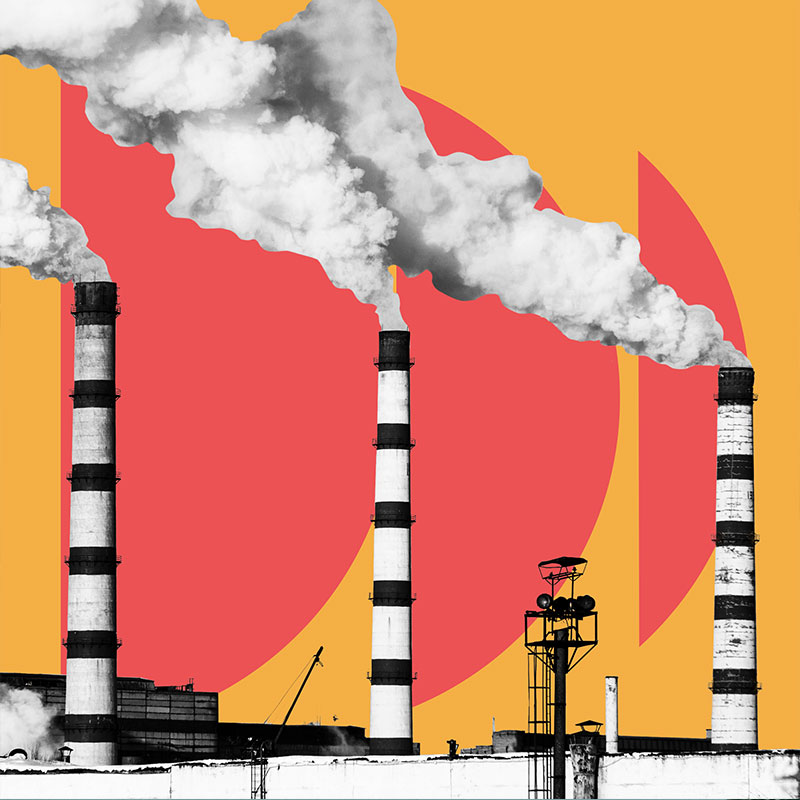
FACT: Scientists agree that humans are responsible for climate change
Multiple independent studies have found that between 90 and 100 per cent of scientists agree that humans are responsible for climate change, with most of the studies finding a 97 per cent consensus.
A 2021 study found a greater than 99 per cent consensus on human-induced climate change in the peer-reviewed scientific literature (reviewed by experts in the same field prior to publication) - a level of certainty similar to that of the theory of evolution.
The Synthesis Report by the Intergovernmental Panel on Climate Change (IPCC), released in March 2023, categorically confirmed that human activity is the overwhelming cause of climate change. The IPCC’s comprehensive assessments are written by hundreds of leading scientists from around the globe, with contributions from thousands of experts, and endorsed by the governments of every country in the world.
FACT: Every fraction of a degree of warming matters
With every increment of global warming, extreme heat and rainfall events become more frequent and more intense. (IPCC)
Greenhouse gases, such as carbon dioxide, from human activities are responsible for approximately 1.1°C of warming since 1850-1900. (IPCC) This has already caused significant changes in the climate, including more extreme weather events, which have caused widespread harm to people and nature. (IPCC)
If global warming exceeds 1.5°C above pre-industrial levels, there will be more heat waves, longer warm seasons and shorter cold seasons. At 2°C of global warming, extreme heat would more often cross critical tolerance thresholds with devastating impacts on agriculture and human health. Increasing changes to wetness and dryness, to winds, snow and ice, coastal areas and oceans, will affect different regions in different ways. (IPCC)
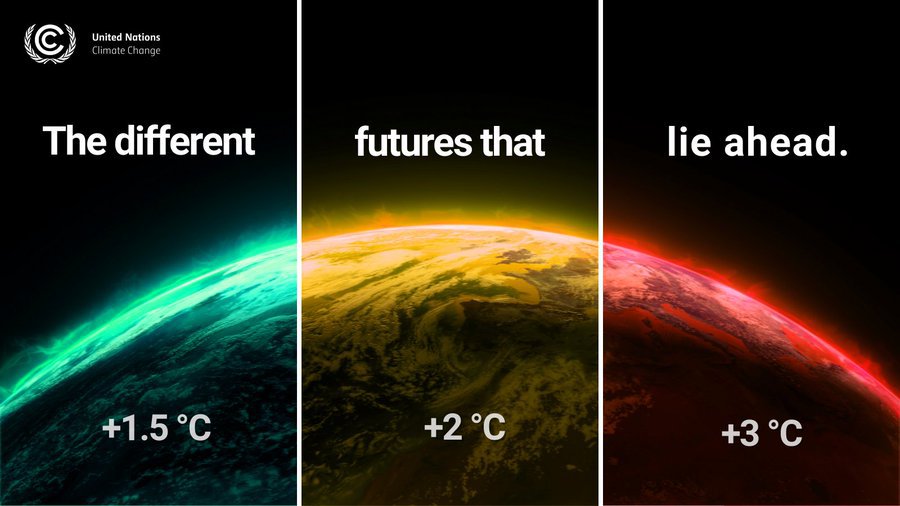

FACT: Cold weather doesn’t disprove global warming
The weather describes the short-term, day-to-day atmospheric conditions (like temperature or precipitation) at a specific time and place, while the climate is the long-term pattern over decades.
Even with occasional cold days, the planet’s average temperature keeps rising, faster than at any time in at least 10,000 years. The last decade (2015-2024) has been the warmest on record. (NASA, WMO)
Cold extremes can coexist with warming. A warmer atmosphere holds more moisture, which can fuel heavy snowfalls. Shifts in high altitude wind currents can also push Arctic air southward, creating intense local cold while the globe as a whole keeps heating. (Arctic Council)
FACT: Climate models are reliable scientific tools
Climate models are built on well-established physics and real-world data which continue to improve in accuracy. Such models have effectively predicted global temperature rise, sea level increase, and Arctic ice loss over decades. Across all models, the conclusion is clear: continued greenhouse gas emissions will lead to further warming and increased climate risks. (IPCC)
Uncertainty in specific outcomes, such as regional impacts or timing, reflects the complexity of the Earth’s systems, not a lack of climate models reliability. In fact, acknowledging uncertainty is a scientific strength, helping policymakers prepare for a range of plausible scenarios. (IPCC)

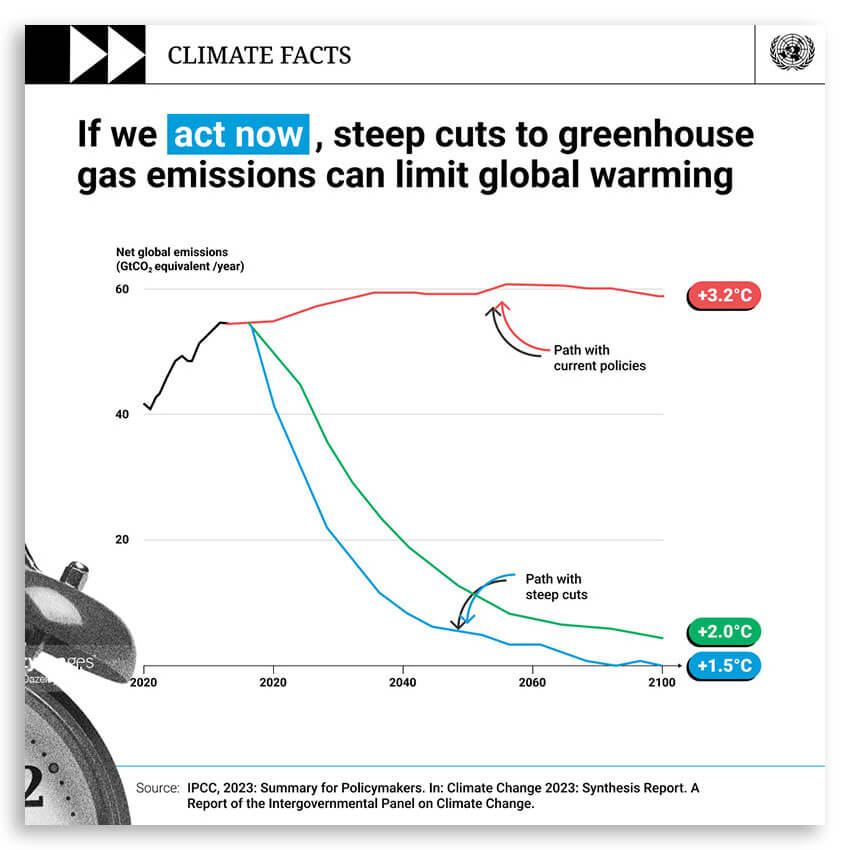
FACT: We can still limit climate change, if we act now!
The choices we make today will determine the changes in the climate we will experience in the future. (IPCC)
Large and sustained reductions in emissions of carbon dioxide and other greenhouse gas emissions would limit climate change. (IPCC)
If we act now, we can limit climate change and preserve a liveable planet.
We have the knowledge, tools and resources to secure a liveable, sustainable future for all.
Impacts on People and Nature

FACT: Climate change is a major threat to people’s health
The impacts of climate change are harming human health – through air pollution, disease, extreme weather events, forced displacement, food insecurity and pressures on mental health – and will only get worse with every fraction of a degree of warming. (WHO)
The main cause of climate change – the burning of coal, oil and gas – also causes air pollution which in turn can lead to respiratory diseases, strokes, and heart attacks. More than 5 million people die every year due to fossil fuel air pollution. (NIH)
Replacing fossil fuel-based power plants with renewable energy, such as wind or solar farms, will greatly benefit human health. Wind turbines and solar panels do not release emissions that pollute the air or cause global warming. (REN21)
FACT: The climate is changing faster than humans, plants and animals can adapt
If global temperatures keep rising, adapting to climate change will become increasingly difficult, especially for poorer countries. A small island, for example, may become uninhabitable due to sea level rise and lack of sufficient freshwater. In that case, inhabitants may have no other option than to abandon their homes. (IPCC)
Adaptation alone cannot keep up with the impacts of climate change. Adaptation is crucial for saving lives and livelihoods, but humans’ ability to adapt to climate change is not limitless. (Insights)
Rising sea levels that submerge coastal communities and extreme heatwaves intolerable to the human body are examples of ‘hard’ limits to our ability to adapt. (UNFCCC)
With increasing global warming, losses and damages will increase and more human and natural systems will reach the limits of their ability to adapt. Many species and ecosystems are already near or beyond their adaptation limits. (IPCC)

FACT: Climate change is making storms, floods and wildfires more frequent and more intense
Storms, floods and wildfires have always occurred, but they are becoming more frequent and more intense due to climate change.
Higher temperatures increase atmospheric moisture, which results in heavier rainfall events and stronger winds, raising storm and flood risks. Hotter temperatures also dry out soil and vegetation, creating ideal conditions for wildfires to ignite and spread rapidly. (IPCC)
The number of climate-related hazards has increased fivefold in the past 50 years. In 2024, 45.8 million people were displaced due to weather-related disasters. (UNFCCC, UNHCR)
The economic toll of disasters is accelerating. Average annual costs rose from USD 70–80 billion (1970–2000) to USD 180–200 billion (2001–2020), reflecting the growing intensity and impact of climate-driven extreme events. (UNDRR)
FACT: Extreme heat is one of the deadliest climate risks
Studies have shown that, globally, deaths associated with cold temperatures outnumber those from heat. However, due to climate change, the number of deaths caused by heat is growing, and extreme heat is becoming one of the deadliest hazards. (HeatHealth)
Between 2000 and 2019, extreme heat caused around 489,000 deaths every year. (WMO) Annual heat-related deaths among older persons have risen by an estimated 85 per cent since the 1990s. (UNEP)
Extreme heat events are becoming more frequent, longer, and more severe. Between 2000 and 2016, the number of people exposed to heatwaves increased by around 125 million, especially in regions like South Asia, the Middle East, and South America. In 2024, climate change added 41 days of dangerous heat. (WHO, WHO)
Studies project that by mid- to late-century, heat deaths will rise sharply, outpacing potential reductions in cold-related deaths. (HeatHealth)
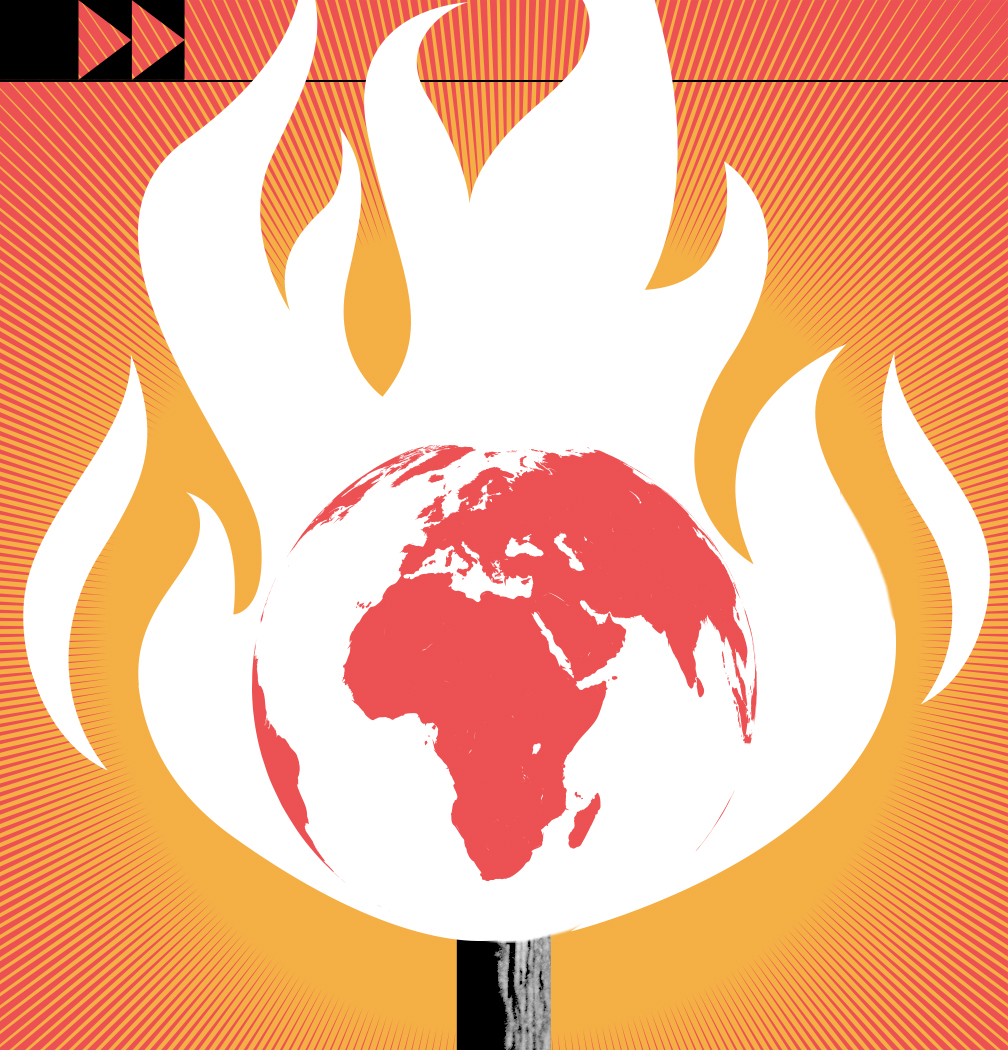
Fossil Fuels and Emissions
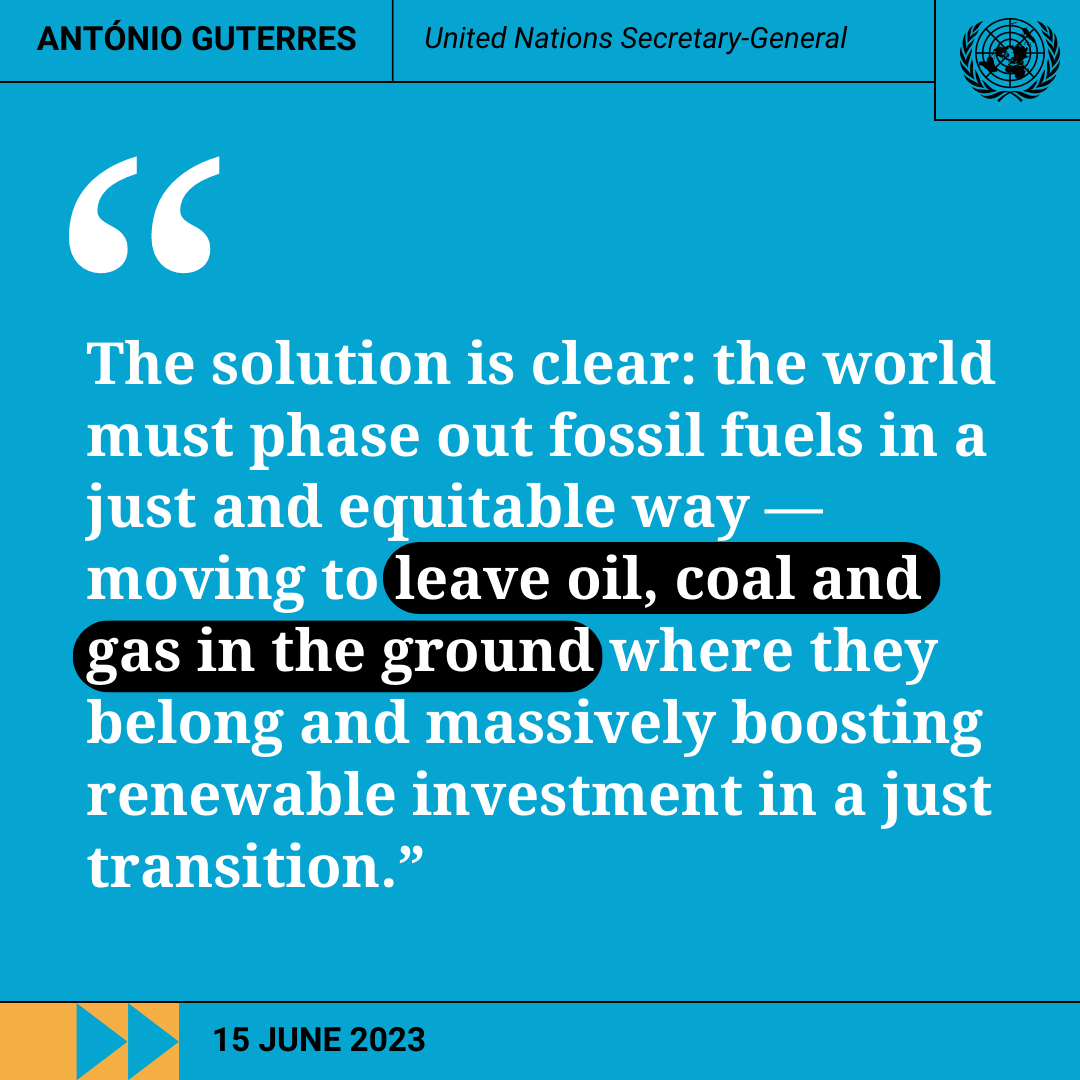
FACT: Natural gas is a fossil fuel, not a clean source of energy
Natural gas is a fossil fuel like oil and coal – formed from the remains of plants, animals, and microorganisms that lived millions of years ago. When burned, it releases carbon pollution into the atmosphere.
Burning natural gas was responsible for 22 per cent of global carbon emissions from fuel combustion in 2020 (not far behind oil, 32 per cent, and coal, 45 per cent). (IEA) And emissions from natural gas rose by around 2.5 per cent in 2024, making it the largest contributor to the growth in global carbon emissions. (IEA)
In addition, the extraction and transport of natural gas often releases methane – a powerful greenhouse gas – into the atmosphere. Natural gas production was responsible for 35 million tonnes of methane emissions in 2024 – about the same amount of methane emissions as from the oil industry. (IEA) (Methane is about 84 times more potent than CO2, measured over a 20-year period). (UNEP)
FACT: The fossil fuel industry continues to be heavily subsidized
Fossil fuels are receiving nearly nine times as much government support as renewable energy. Governments spent USD 620 billion to subsidize the use of fossil fuels in 2023, compared to USD 70 billion for clean energy. (IEA) When taking into account the enormous environmental costs of fossil fuels – mostly from air pollution and global warming – which are often not reflected in the price of fossil fuels, governments spent a total of USD 7 trillion on subsidizing fossil fuels in 2022. (IMF) These legacy subsidies perpetuate fossil fuel infrastructure and distort market competition, making it harder for renewables to scale fairly. (IEA, IMF)
While renewables are now the cheapest source of new electricity globally, they still face barriers such as outdated grids, slow permitting, and fossil-fuel-oriented market structures. Meeting the climate goals will require USD 4.5 trillion in annual clean energy investments by 2030, alongside policy reforms. (United Nations, IMF)
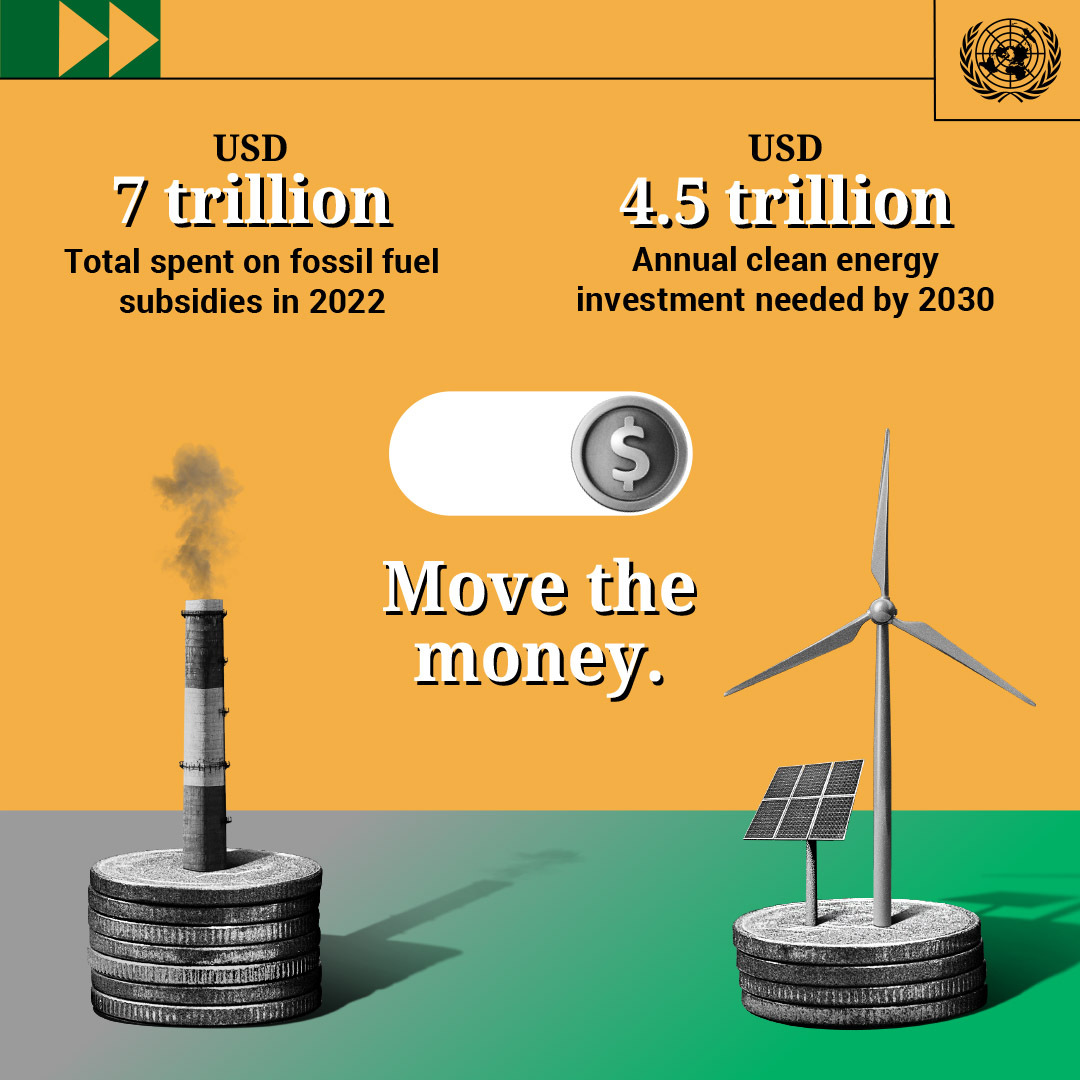

FACT: China leads in total annual emissions, while the U.S. is the largest historical and per-person contributor
The United States has contributed more to global greenhouse gas emissions over time than any other country, making it the largest historical emitter. The U.S. also has the highest per-person emissions – nearly three times the global average – more than twice that of China, five times that of Mexico, and eight times that of India. (EPA, UNCTAD, UNEP)
China leads in total annual emissions – with a significant share coming from producing goods for U.S. and European markets. (UNEP)
Climate change is a global problem and all countries must act. But G20 countries – responsible for almost 80 per cent of global emissions – must lead this effort. (UNEP)
FACT: There are alternatives to petroleum-based products
Many everyday products are still produced using oil or other fossil fuels. The process of extracting and transporting those fuels, and manufacturing the products creates lots of carbon emissions. Most plastics, clothing, tires, digital devices, fertilizer, laundry detergents and countless other everyday items are made from petrochemicals. (IEA)
The production of plastic is one of the most energy-intensive manufacturing processes in the world. The material is made from fossil fuels such as crude oil, which are transformed via heat and other additives into a polymer. In 2019, plastics generated 1.8 billion metric tonnes of carbon emissions – 3.4 per cent of the global total. (UNEP)
But there are alternatives. Plastic can be made fully or partially from plant materials, such as cellulose, potato or corn starch, sugar cane, maize and soy, instead of petroleum or natural gas. Bio-based plastic can be engineered to be biodegradable or compostable. (UNEP)
However, using plant-based materials must be thoughtfully designed to take into account environmental, social, and economic factors across ecosystems and communities. Environmental and socio-economic assessments often demonstrate that not all alternatives lead to better overall outcomes. Alternatives might have less harmful impacts on the climate, but may use more water or land, for instance. (UNEP)
Bioplastics make up only about 1 per cent of the plastic produced worldwide today. (IEA)
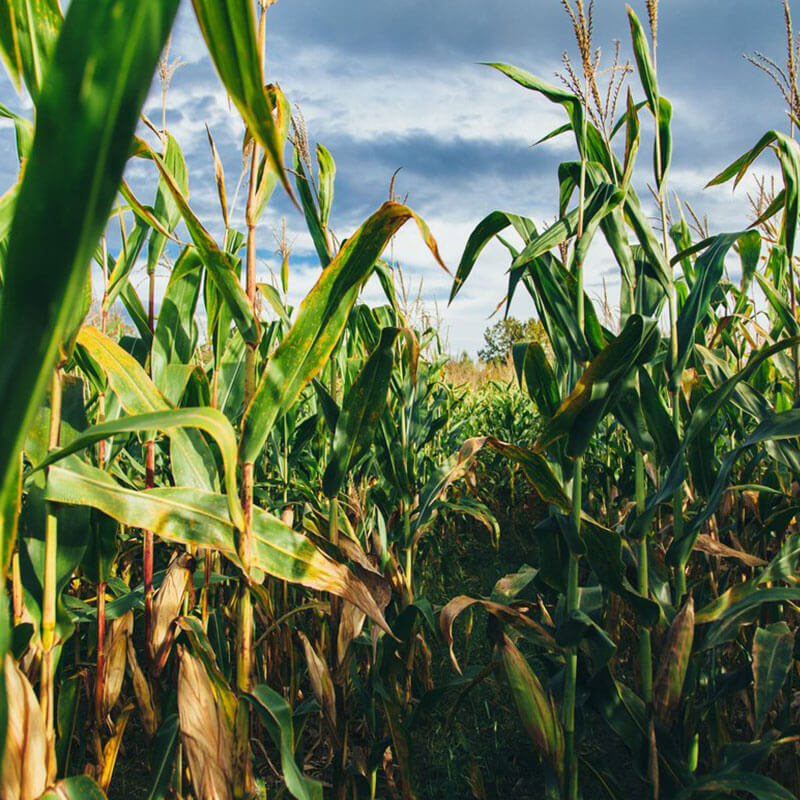
Renewable Energy
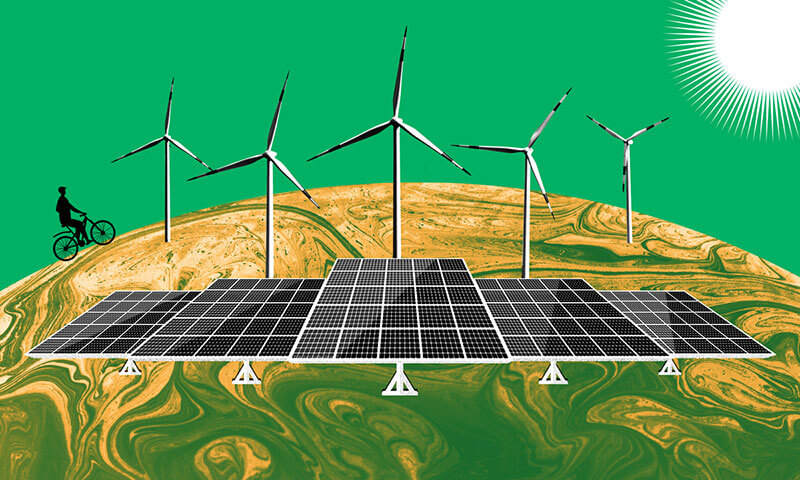
FACT: Clean energy technologies produce far less carbon pollution than fossil fuels
Clean energy technologies – from wind turbines and solar panels to electric vehicles and battery storage – do require a wide range of minerals and metals (IEA), and produce thus some emissions, but still far less than fossil fuels. (IEA)
Solar panels produced today only need to operate for 4-8 months to make up for their manufacturing emissions (and the average solar panel has a lifetime of around 25-30 years). (IEA) Wind turbines, similarly, take only about 7 months to produce enough clean electricity to make up for the carbon pollution generated during manufacture (and they have a typical lifespan of 20-25 years). (ScienceDirect)
Most of the carbon pollution generated during a wind turbine’s life occurs during manufacturing. Once it’s up and spinning, the turbine generates close to zero pollution. A coal or natural gas plant, in contrast, burns fuel — and releases carbon dioxide — every moment that it runs. (Yale)
Even the most carbon-intensive wind turbine is responsible for far less carbon emissions per kilowatt-hour of electricity produced than any coal or natural gas-fired power plant. (Coal-fired power plants produce 675 to 1.689 grams of CO2 per kilowatt-hour, while natural gas power plants produce 437 to 758 grams — far more than on- and offshore wind which produce, on average, 15 and 12 grams (UNECE), or even the most carbon-intensive wind turbine at 25.5 grams). (Yale)
Electric vehicles, over their lifecycle, from manufacturing to disposal, produce about half the carbon emissions of the average internal combustion engine car, with the potential for a further 25 per cent reduction with low-carbon electricity. (IEA)
FACT: Renewable energy is cheaper than fossil fuels
Electricity from renewables is the cheapest power option in most parts of the world today. (IRENA)
The world has witnessed a seismic shift in the competitiveness of renewable power options since 2010: by 2024, solar PV had become 41 per cent cheaper than fossil fuels, while onshore wind was 53 per cent cheaper. (IRENA)
Solar has experienced the most rapid cost reductions, with costs of newly commissioned utility-scale projects falling 88 per cent globally between 2010 and 2021. The cost of onshore wind fell by 68 per cent, and offshore wind by 60 per cent since 2010. (IRENA)
By 2023, 96 per cent of new large-scale solar and wind projects were cheaper than building new coal or gas plants. (IRENA)

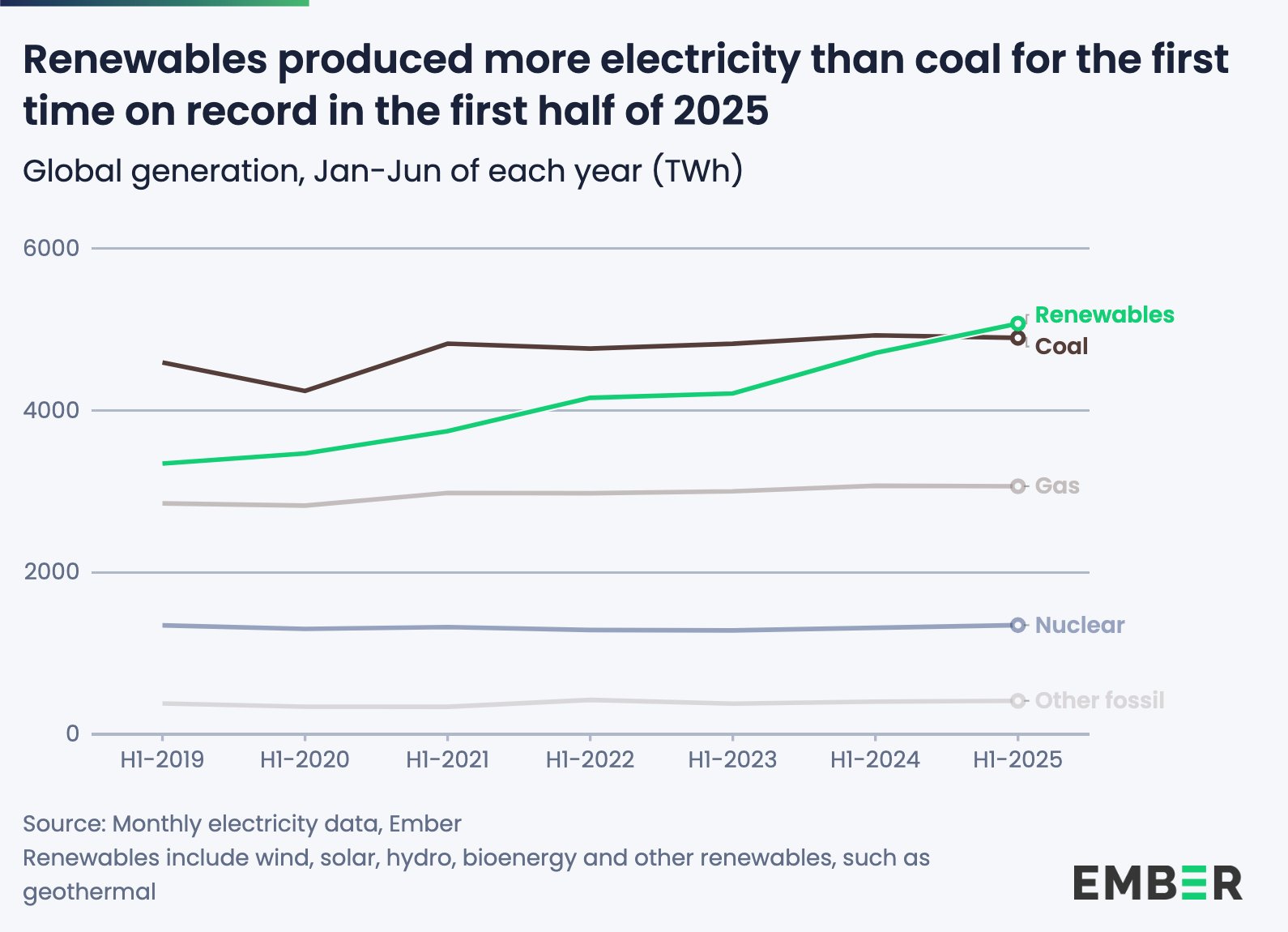
FACT: Renewable energy is becoming the world’s top source of electricity
Renewable energy sources – such as water, geothermal, wind and solar – are available in every country, and their potential is yet to be fully harnessed.
According to Ember, renewables accounted for 34.3 per cent of global electricity in the first half of 2025 — for the first time generating more power than coal (33.1 per cent).
Wind and solar are driving this rise, meeting more than 90 per cent of the increase in global electricity demand through 2026. Their combined share of global power has jumped from just 1 per cent in 2005 to nearly 20 per cent by 2026. (IEA)
By 2026, renewables are expected to supply 36 per cent of global electricity, with coal dropping to 32 per cent, its lowest share in a century. (IEA)
By 2050, 90 per cent of the world’s electricity can and should come from renewable energy. (IRENA)
In many regions, renewables are the fastest-growing energy source. (IEA)
FACT: Entire countries already rely on nearly 100 per cent renewable electricity
Costa Rica, Norway, Iceland, Paraguay and Uruguay power their grids with hydro, geothermal, wind and solar energy. (REN21)
Some provinces and sub-national states also use nearly 100 per cent renewables-based electricity: South Australia, Quebec (Canada) and Qinghai (China), as well as the islands of Ta’u (American Samoa), Eigg (Scotland) and El Hierro (Spain). (REN21)
Scotland and South Australia have met more than 100 per cent of their total electricity demand with wind and solar, sometimes exporting their surplus. (REN21)
Other regions have generated surplus electricity with hydropower: Paraguay and Quebec both export their surplus hydropower. (REN21)
NOTE: No examples exist of fully renewable-based energy systems that span the electricity, heating, cooling, and transport sectors (the above examples cover only electricity). The foundations of such systems are now being laid, including the technologies, infrastructure and markets. (REN21)

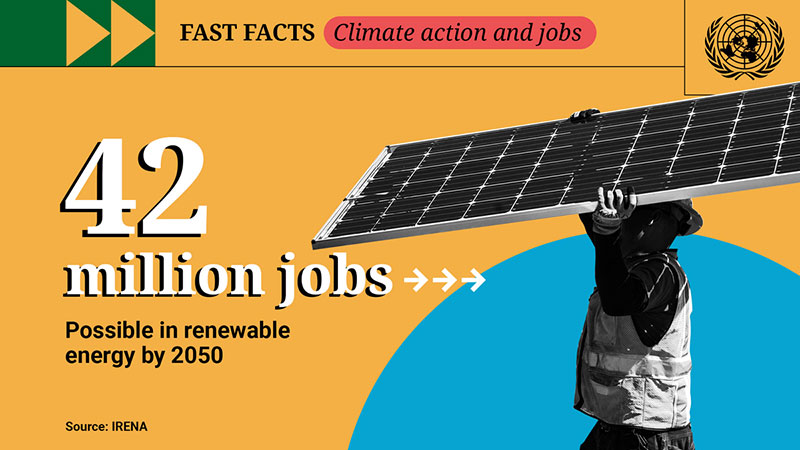
FACT: The transition to clean energy will create millions of jobs
The transition to net-zero emissions is projected to lead to an overall increase in jobs in the energy sector: about 5 million jobs in fossil fuel production could be lost by 2030, but an estimated 14 million new jobs would be created in clean energy, resulting in a net gain of 9 million jobs. (IEA)
Every dollar of investment in renewables creates three times more jobs than in the fossil fuel industry. (SG)
In addition to the 16.2 million people already working in renewables (as of 2023), an estimated additional 85 million jobs related to the energy transition will need to be filled by 2030. (REN21, IRENA)
The renewable energy sector is predicted to create about 40 million direct jobs worldwide by 2050. (IRENA)
Clean energy jobs (direct and indirect) surpassed those from fossil fuels for the first time in 2021. (IRENA)
FACT: Solar panels and wind turbines make good use of land
All energy sources require land: from the plot used for mining coal, to the land taken up by a power plant.
Wind farms require a lot of land, but while a coal mine is used just once, a wind farm continues to produce energy, year after year. Over time, an acre of wind or solar can generate more electricity than an acre of coal or uranium mines.
Land used for solar and wind farms can be “dual-use” – used for energy production and agriculture at the same time. Once built, a solar or wind farm has so little impact on its land that it is increasingly common to allow grazing and farming on the same acres at the same time.
Solar panels do not need to be installed directly on the ground, they can be put on existing structures like rooftops, roads or parking lot canopies, over canals and on agricultural land, and even floated on lakes and ponds.
In South-East Asia and Africa, where solar projects tend to compete with agricultural land, “agrivoltaics” and “floatovoltaics” allow agricultural land and water to be “dual-used” for solar panels without compromising water and food resources. (REN21)
Solar farms can also be installed on land that is not suitable for other uses – deserts, landfills, old coal mines or contaminated territory (Chernobyl now hosts a solar plant).
Solar panels can be put anywhere on Earth because the sun shines everywhere. No other type of electricity generation can match this flexibility.
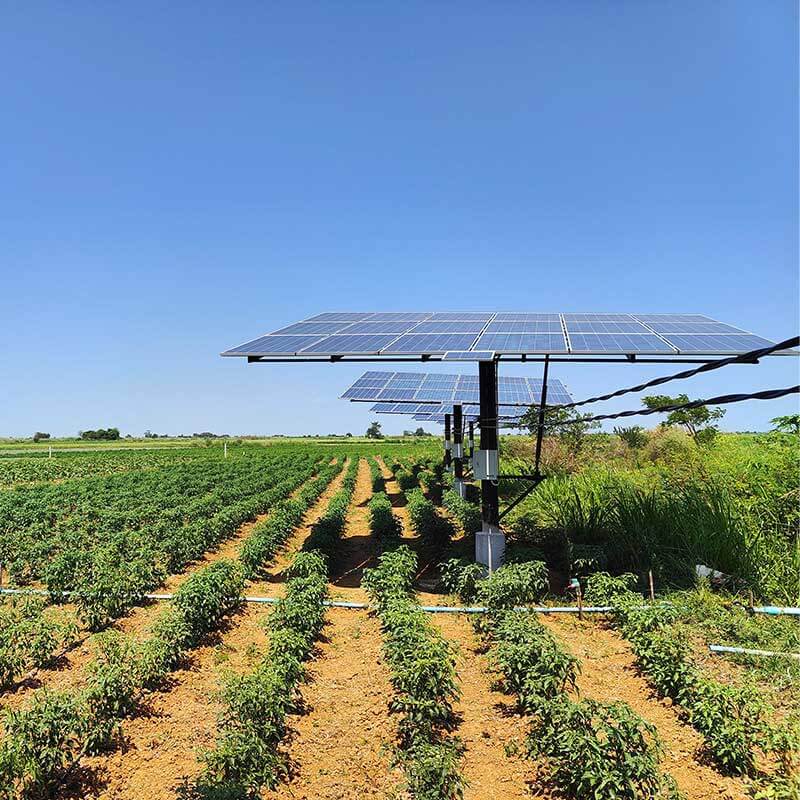
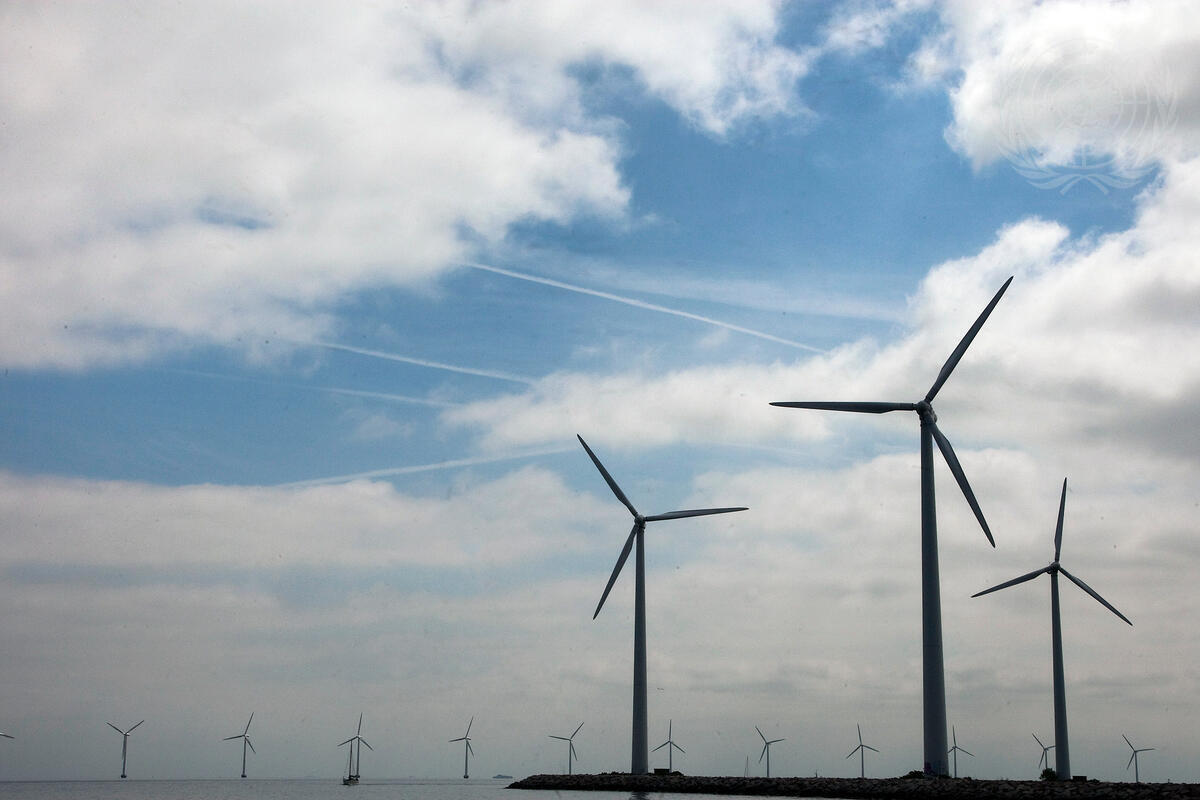
FACT: Wind turbines pose minimal risk to wildlife
Climate change is the biggest threat to wildlife. And wind power is crucial in the fight against climate change.
Birds can collide with the blades of wind turbines. However, more birds are killed due to other human activities, such as habitat destruction or collisions with buildings and vehicles. In fact, more birds are killed by cats than by wind turbines.
Moreover, measures are being put in place to minimize bird collisions, including painting one turbine blade black to make it more detectable to birds. (UNECE)
Sometimes wind farms are also blamed for the deaths of whales. However, there is no evidence that offshore wind farms are killing whales. Most whale strandings occur because whales get struck by ships or entangled in fishing nets. Surveys of the ocean floor to locate suitable sites before wind farms are built use low-risk sound and have not been found to harm whales. (Factcheck.org, NOAA)
Wind power is key in transitioning away from fossil fuels to limit climate change and protect nature against the hazardous impacts of global warming.
FACT: Renewable energy is better at withstanding extreme weather events
Weather affects all energy sources. (IEA)
Gas-fired power plants could not keep up with electricity demand during the exceptionally cold weather in Texas, in the United States, in February 2021, leaving up to 5 million customers without power over a period of four days – primarily due to frozen gas wells and power outages in gas generators. Coal and nuclear plants also experienced outages. (IEA)
Increasing the share of wind and solar in the energy mix improves electricity security: a well-diversified energy mix can reduce the risks that come from disruptions in the supply of fossil fuels. Small-scale generators, such as distributed wind and solar panels, can also speed the recovery of communities from disasters or large-scale blackouts, while large thermal power plants take longer to resume normal operations since they need a large part of the system to be restored. (IEA)
Systems with distributed resources can be more resilient than centralized systems. Renewable energy technologies reduce vulnerability to climate risks by diversifying the sources of power and using battery storage and smart information technology.
Solar energy can also provide energy for emergency communication and natural disaster response in remote areas.
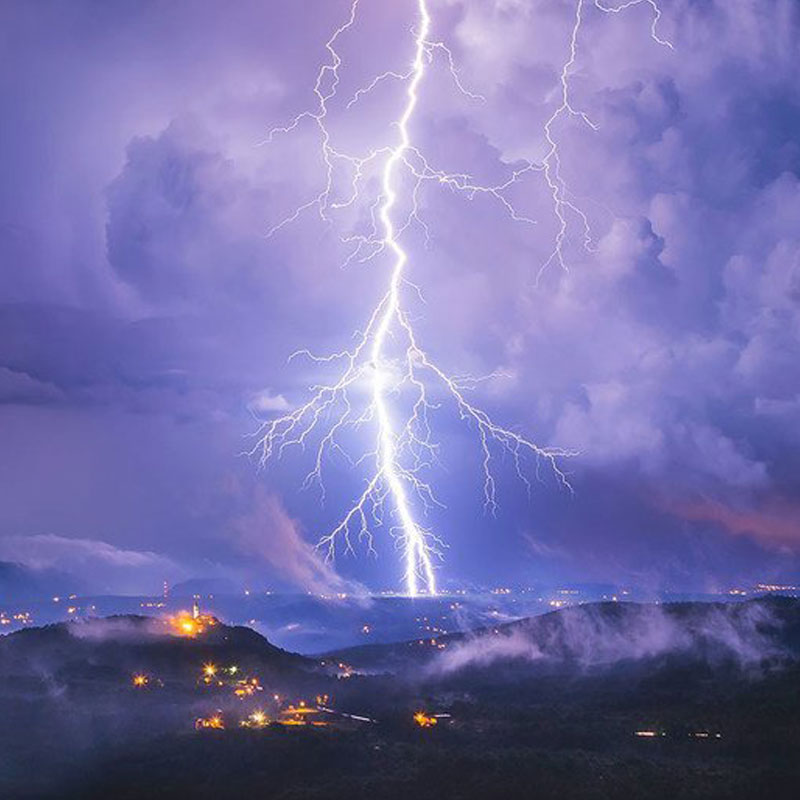

FACT: Wind and solar power provide real energy security
Oil and gas leave economies and people at the mercy of price shocks, supply disruptions, and geopolitical turmoil. Water, wind and the sun, on the other hand, offer stable, affordable, abundant and locally sourced energy. (United Nations) By relying on domestic renewable energy, economies can reduce their vulnerability to external shocks and dependence on imported fossil fuels, thereby saving valuable foreign exchange reserves and gaining energy independence.
Solar, wind, and hydropower are domestically available, stable, and affordable. Unlike fossil fuels, wind and solar power are not subject to international market volatility, making them a more secure and sovereign source of energy for most countries. (United Nations)
Learn more here about how the UN, in collaboration with Brazil and UNESCO, is working to strengthen information integrity on climate change.
